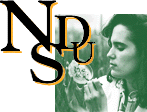 |
|
|
|
Identification key to the Noctuinae occurring in the Dakotas
One other common widespread group within the family Noctuidae shares the morphological characters of the subfamily Noctuinae-- subfamily Heliothinae. Heliothines, while distantly related to Noctuinae, are structurally so similar that traditionally and as late as the mid 1950's, they were treated as a tribe within the Noctuinae. The majority of heliothines have setose tibiae, those most similar to Noctuinae can be separated by structural or color differences as follows. Structurally, most heliothines possess markedly asymmetrical apical setae of the fore-tibia, the mesal seta often 1 1/2 or more times the length of the lateral seta, and/or the setae are fossorial (1). By color, two characters which are almost universal in North American heliothines are: first, on the ventral forewing, the ordinary spots are dark on a lighter background and the post median area appears as a dark fascia (2); second, on both dorsal and ventral hindwings, a discal spot is present and the dark outer marginal band is interrupted by a pale spot near the outer angle (3). While not every heliothine possess all of these characters, each possess at least one of them distinct for easy recognition. Again, identification is not classification and a whole suite of characters from other stages (eggs, larvae, pupae) as well as molecular evidence shows these two subfamilies, Heliothinae and Noctuinae, to be monophyletic groups that are not particularly closely related within the Noctuidae.
|
|
Last updated:
02/06/07
|